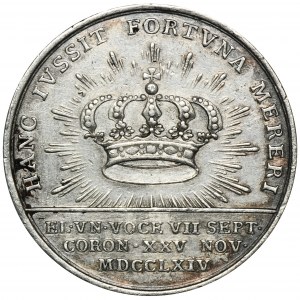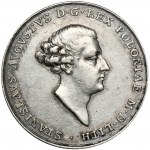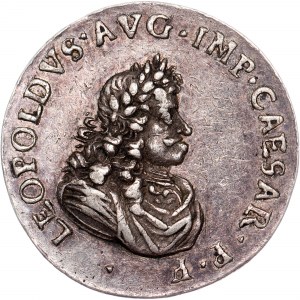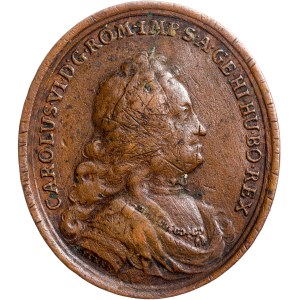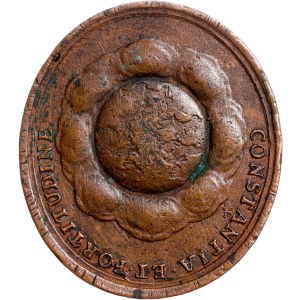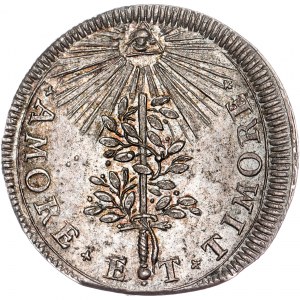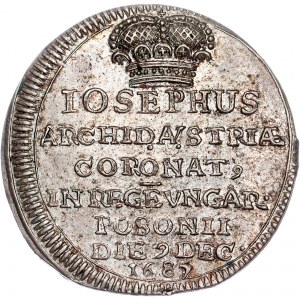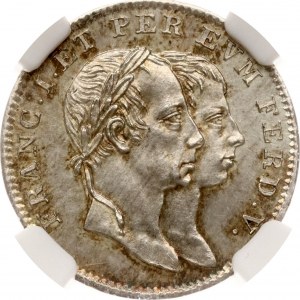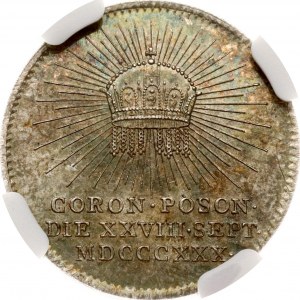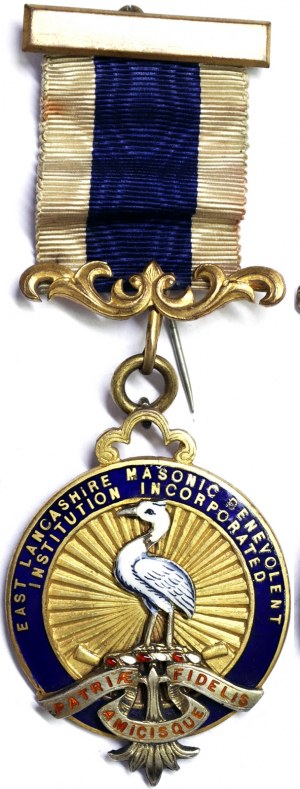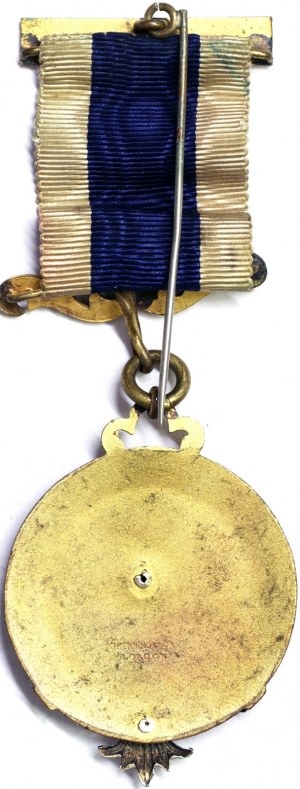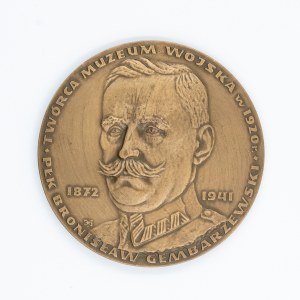Coronation medal of Stanislaw August Poniatowski, 1764, designed by Thomas Pingo, signed under the neck F. PINGO F.
Piece with minor rubbing on head, background rubbed, but overall nice.
Obverse: head of King Stanislaw August to the right
STANISLAVS AVGVSTVS D G REX POLONIAE M D LITH (Stanislaw Augustus by God's grace King of Poland, Grand Duke of Lithuania).
Reverse: resplendent royal crown, in segment EL VN VOCE VII SEPT CORON XXV NOV MDCCLXIV (elected by unanimous vote of all on September 7, crowned November 25, 1764)
HANC IVSSIT FORTVNA MERERI (fortune had it earned).
Silver, diameter 33 mm, weight 18.21 g
Edward Raczynski writes about the presented item in the following way: "The history of the last interregnum and the election, as it extends to the most numerous part of the Polish nation, has so many living associates and witnesses, that to describe it would be to show some distrust in the public memory; therefore I decided to stop at the coronation, with which the medals presented here are more closely related and which was almost all contained in one city.
The first two medals (No. 487, 487) are those which were given out at the coronation ceremony to commemorate such an important ceremony; the first gold medal was given only to the preceding lords and persons of higher rank, the silver one was given to persons of higher rank following those, and I do not remember that it was distributed. The third medal (No. 488) minted in Torun was distributed to the community on the third day after the coronation, when the king in a very splendid procession rode to the Holy Cross church of the missions and returned from there. The king's treasurer was lavishing these bullet coins with his generous hand in all directions. The coronation ceremony took place in Warsaw, according to the rules of the electoral assembly, for the reason, among others, that the castle of Krakow, which had not been cleaned at all and had been destroyed to a great extent, was not fit to receive the king and to hold the assembly which followed the coronation. This holy rite was performed in the main church of Warsaw, St. John's, by Wladyslaw Lubienski, Primate Archbishop of Gniezno, in the presence of many other bishops, among whom were the Archbishop of Lvov and the Bishop of Cracow, who accompanied the king. In order that the magnificent rite could be seen more conveniently and from a greater number of countrymen and foreign people, many stepped displays were built in the church. The royal ornaments were carried by the governors of Cracow and Sendomir and the castellan of Vilnius. Swords and crowns swordsmen, banners, that the casing of the two nations v. ensigns were not present, the court ensign of the crown, and the first of the county ensigns conscious in. x. lit., and this one was an ensign of Lydia. The castellans, who were called lesser castellans for the time, carried the staffs of the canopy under which the king walked on foot. Count Krasicki, who for the time was a prelate of Lwow and coadjutor of the Wąchocki abbey, and who soon afterwards became coadjutor of the Warmian bishopric, and at the end of his life became archbishop of Gniezno, gave an elegant but very short sermon. The day after the coronation the king, with great splendor, under a canopy carried from the leading magistrates in office in Warsaw, went to the town hall, and from there to the market square, where, preceded by lords wearing royal ornaments, he sat on a throne erected in the northern part of the market square, and there received the homage of the major cities and the oath of allegiance. At other former coronations this custom was preserved, that money on the very day of the coronation was distributed to the common people when the king returned from church to the castle. In Warsaw this custom had to be changed, because the route from the church to the castle was too short, and because of the narrowness of the place and the number of people it was very difficult to travel, which would make it even more difficult and inaccessible for the common people to reach the money thrown out, not without danger to health and life for those less attentive and more seduced by greed. For these reasons the rite was postponed until the third day. Therefore, under the guise of giving thanks to God, by the procedure prescribed by the church, it was decided to go to the parish church of the Missionaries of the Holy Cross, at the end of the suburb. The king on horseback turned out to be the people of the city. The King on horseback presented himself to the people, who occupied all the surrounding streets, and in accordance with the old custom ordered medals to be flashed on all sides of the feature, which is located under the number 488; this medal has the King's expression, which was drawn by my brother half a year before the coronation. - From this feature the keel was carved from a London mincer. Who invented the inscription of the reverse side is not known to me. It is clear that the intention was to avoid the pride of the coronation inscription of August III: Meruit et tuebitur, but the love of modesty caused another error, that is, the word darkness and a contradiction arising from the words, as it is difficult to reconcile merit with fortune. This inscription attempted to explain and praise the most noble husband X. Stanislaw Konarski of the Piarist Schools, in an excellent speech given in the most numerous gathering of the most eminent people in Warsaw at the time. Whether he had a more special reason for this, we do not know. But the general public was not in favor of this inscription at that time, and to this opinion, according to all parallels, the king himself joined in. When the first medal for the distance of the places where the tarsal was cast was not successful enough, and the expression of the king's face lacked likeness, after bringing to Warsaw an excellent artist Jan Piotr Holzhauser, it was decided to have a new tarsal carved, which would more perfectly depict the king's face, and having retained with a slight variation the expression of the reverse side, in place of the old inscription another one was given, which the king himself chose and which can be found on the medal under the number 486. The latter medal was minted in Warsaw in the year 1766."




